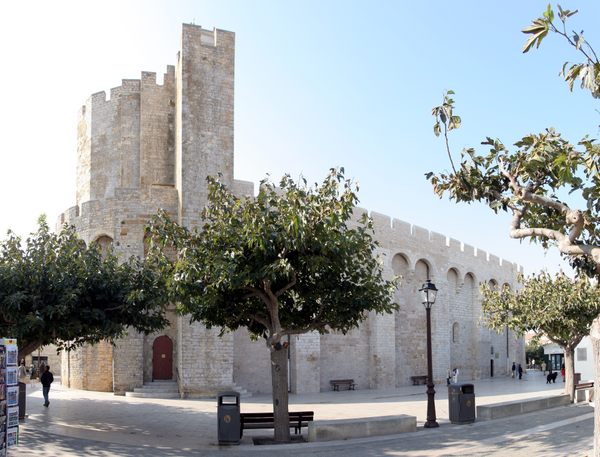Saintes-Maries-de-la-Mer is usually just another Mediterranean beach resort town which doubles as the “capital” of the Camargue wetlands region. For two days in May, however, it is a meeting point for Romani from across France and Europe who come to ritually bathe in the waters here. This is done in honor of the Three Marys, regarded as the first witnesses of Jesus’ resurrection, and their servant Sarah the Black, unofficial patron saint of the Romani people. Throughout the rest of the year, the relics associated with this pilgrimage can be viewed in the town’s medieval church.
There was likely a temple to the god Artemis here in ancient times, and a convent was established in the 6th century. Eventually, a legend developed that Mary Magdalene, Mary of Clopas, Mary Salome, and Sarah arrived here by boat and spread Christianity among the local inhabitants. The current church dates from the 9th century, when the coast came under frequent attacks by Vikings and Arabs. As such, the town and church were heavily fortified, explaining the latter’s castle-like exterior. By the 14th century, the church had become a popular pilgrimage destination.
In 1448, the floor was dug out to search for evidence of the Three Marys’ journey here. Excavators found two corpses “giving off a sweet odor,” which were assumed to belong to Mary of Clopas and Mary Salome. It became a tradition to bring those relics to the sea twice a year. Today, they are above the choir in a chapel which was once a guardhouse. Their painted chasse reliquary depicts the Marys’ arrival on the shores here. Also found during the search for relics was a smooth block of marble, referred to as the “pillow of the Saints Marys” that is today held in the crypt.
The cult of Sarah the Black, whose statue is also in the church crypt, is significantly more mysterious. She is not officially recognized as a saint by the Roman Catholic Church. Sarah was probably venerated here before the Romani migrated from Northern India. However, over time she was assumed to be a Romani and was adopted by as a folk saint. Some theorize she is at least partially inspired by the Hindu goddess Kali, noting the similarities between their respective ceremonies. Like the relics, the statue of Sarah is brought to the sea during the pilgrimage and is partially immersed in water.



